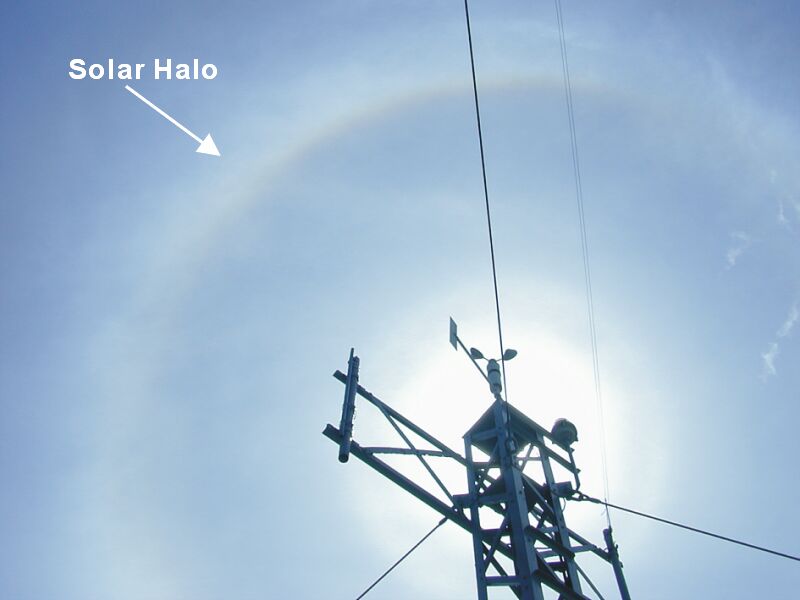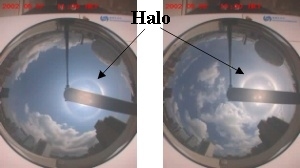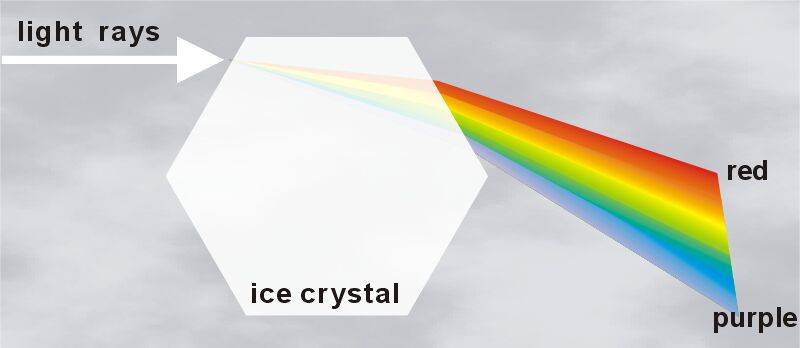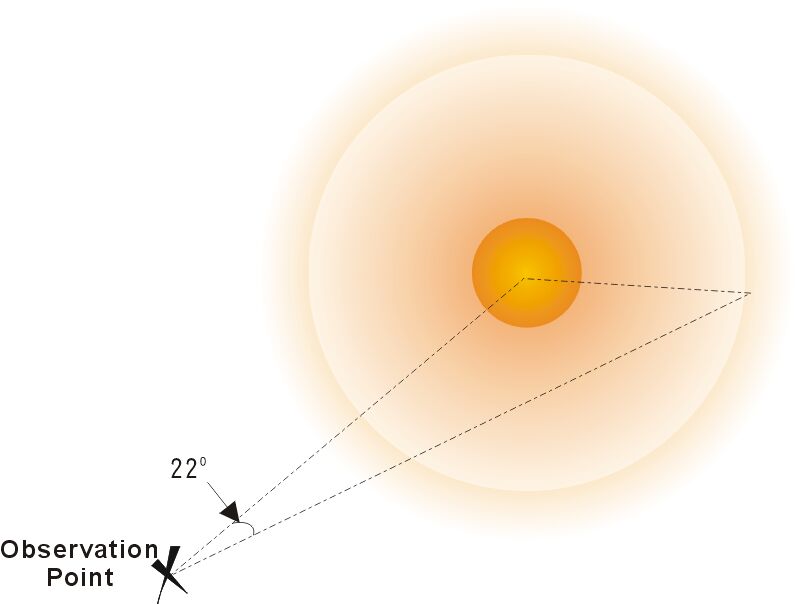談天說地
Halo Captured By The Total Sky Imager
| The Hong Kong Observatory's Total Sky Imager recorded the occurrences of halo on 7 and 8 May 2002 (Figs. 1 and 2). The atmospheric optical phenomenon occurred when sunlight was being reflected or refracted by ice crystals in the high cirrus. The cirrus formed near Beibu Wan in early May and moved over Hong Kong following the upper level wind. As an area of high pressure was dominating the south China coastal areas during the period, very little clouds were observed at the mid to upper atmosphere, thus allowing the observation of the halos from the ground level.
Halo is observed when sunlight or moonlight is reflected or refracted by suspended ice crystals in the atmosphere, in the form of cirrus. Halos are normally in circular or arc forms with seven colours: red, orange, yellow, green, blue, indigo and violet (Fig. 3). There are two common types of halo, 22° and 46° halos. The 22° halo is a circular glowing ring with an angular radius of 22° (Fig. 4). The halo tints with light red colour on the inside of the ring and violet or white colour on the outside. The atmosphere within the halo is normally dimmer than the surroundings. On the other hand, the 46° halo is a larger ring with an angular radius of 46°. This type of halo is comparatively dimmer and is not commonly observed. The halos observed in May 2002 are 22° halos.
|



